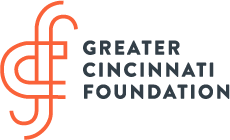Retirement plans to charity: Understanding the “trifecta” of tax benefits
Over the last few months, many advisors have noticed an uptick in client inquiries about leaving their IRAs and other retirement plans to charity. If you’re wondering why, it likely has a lot to do with the buzz about Qualified Charitable Distributions (QCDs), which allow those who’ve reached the age of 70½ to direct up to $100,000 annually to qualified charities—such as a designated or field-of-interest fund at Greater Cincinnati Foundation—avoiding both the need for a Required Minimum Distribution (RMD), if they’ve reached age 73, and the income tax hit.
It’s probably more than just the QCD, though, that has spurred your clients to ask questions. Charitable planning with IRAs and other qualified retirement plans is a topic in financial and mainstream media.
When your client names a public charity, such as a donor advised or other fund at GCF, as the beneficiary of a traditional IRA or qualified employer retirement plan, your client achieves tax-efficient results. Here’s why:
- The client achieves tax benefits over time as they contribute money to a traditional IRA or to an employer-sponsored plan. That’s because contributions to certain retirement plans are what the IRS considers “pre-tax”. Your client does not pay income tax on the money used to make those contributions (subject to annual limits).
- Assets in IRAs and qualified retirement plans grow tax free inside the plan. The client does not pay taxes on the income generated by those assets before distributions start in their retirement years. This allows these accounts to grow rapidly.
- When a client leaves a traditional IRA or qualified plan to a fund at GCF or another charity upon death, the charity does not pay income or estate taxes on those assets. By contrast, if the client were to name children as beneficiaries of an IRA, those IRA distributions to the children are subject to income tax, and that tax can be hefty given the tax treatment of inherited IRAs.
If your client is deciding how to dispose of stock and an IRA in their estate plan, intending to leave one to children and the other to charity, leaving the IRA to charity and the stock to children is a smart choice. Remember, the client’s stock owned outside of an IRA gets the “step-up in basis” when the client dies, which means that the children won’t pay capital gains taxes on the pre-death appreciation of that asset when they sell it.
Traditional IRAs are often poor vehicles for your clients to use to leave a family legacy. Instead, if a client is charitably inclined, traditional IRAs are likely better deployed to posthumous philanthropy if other assets, such as appreciated stock, are available to leave to children and other heirs.

